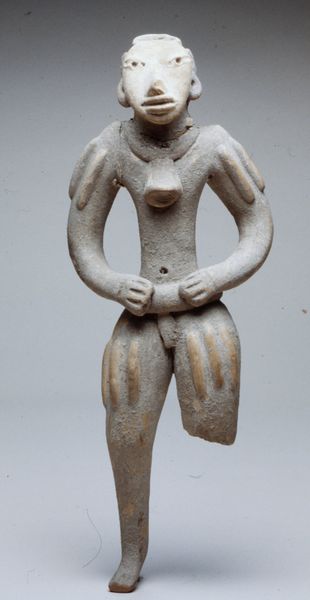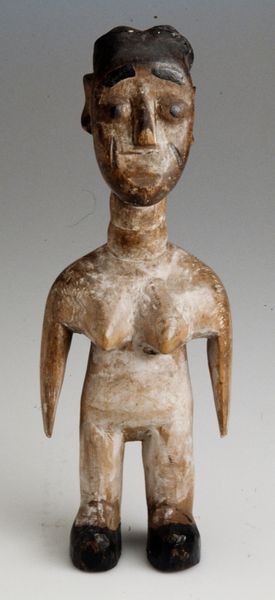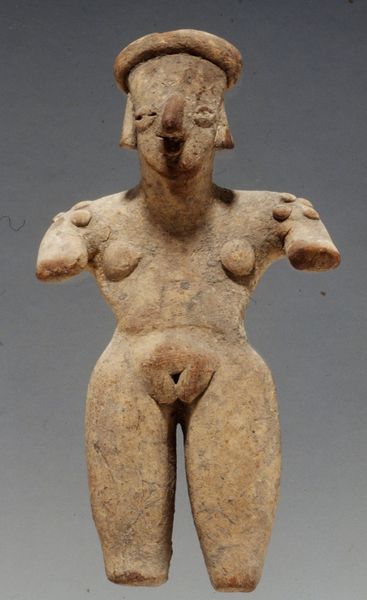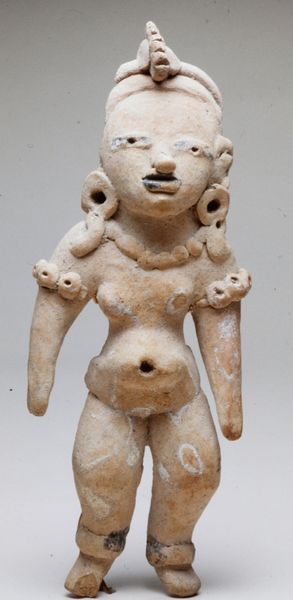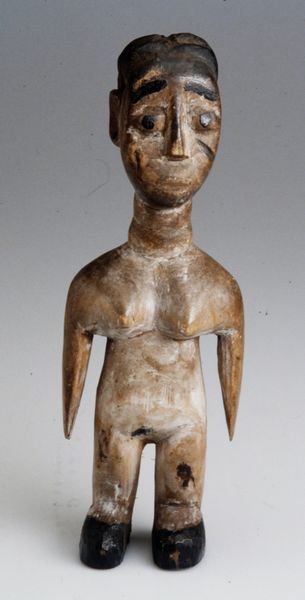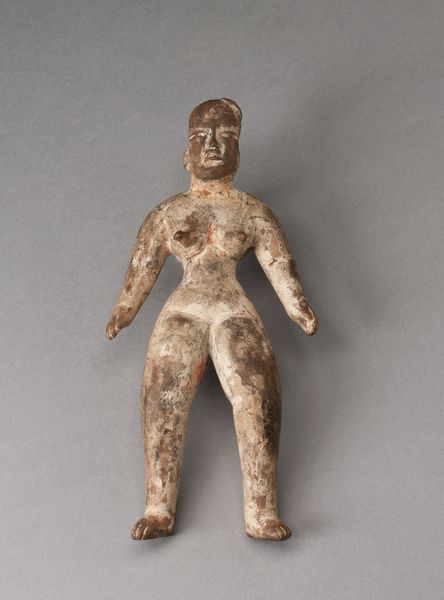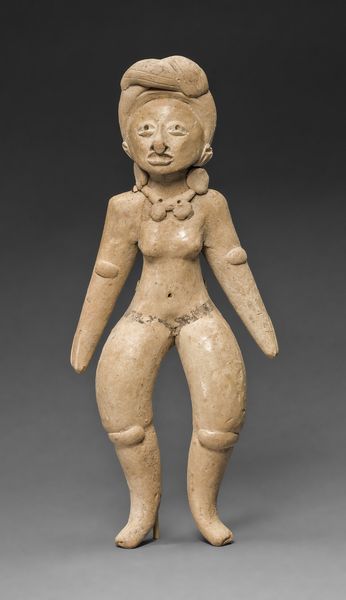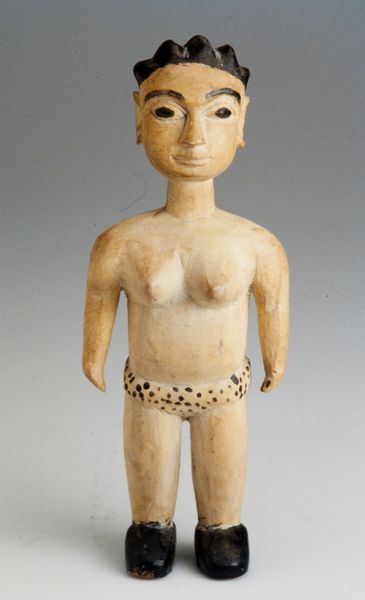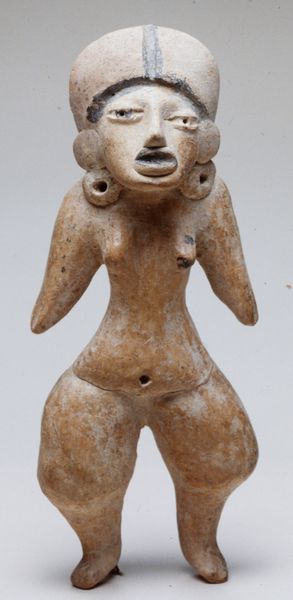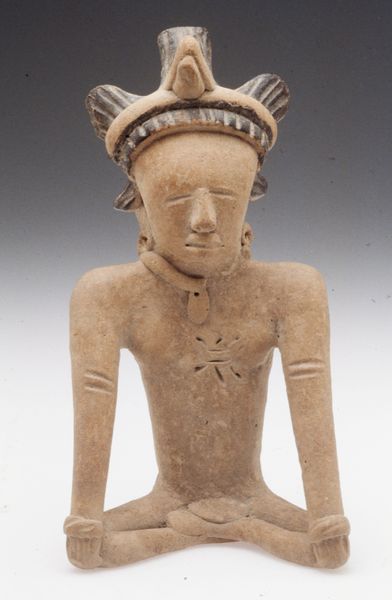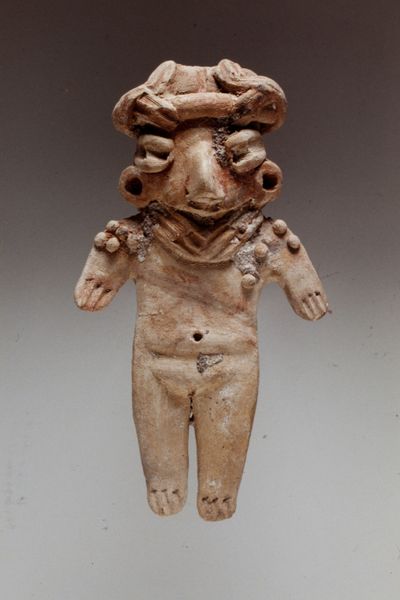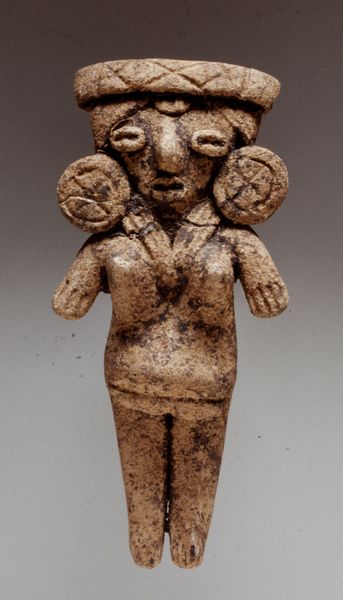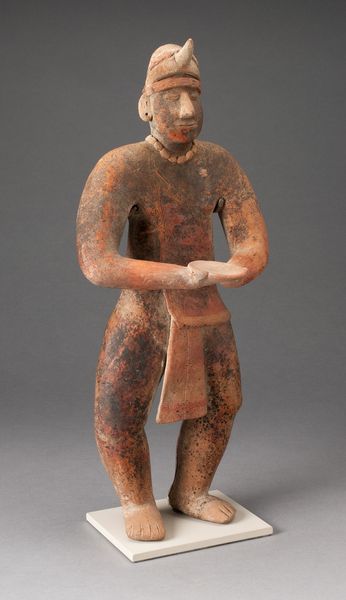
ceramic, sculpture, terracotta
#
ceramic
#
figuration
#
sculpture
#
terracotta
#
nude
#
indigenous-americas
Copyright: Public Domain
Editor: Here we have "Figure," a ceramic sculpture from the Huastec people, dating roughly from 401 to 900 AD. What immediately strikes me is the missing arm and foot. What’s your interpretation of this work? Curator: Considering its indigenous-Americas context, it's crucial to analyze this nude figure within pre-colonial power dynamics. Does the damage, the missing limbs, speak to the violence inflicted upon indigenous bodies and cultures? Think about what it means to display a damaged female nude from a culture often misrepresented or romanticized. What narratives are centered and which are erased by presenting this statue as an artifact? Editor: I never thought of it that way, I guess I just saw it as old and damaged. Curator: Exactly, and it's that instinct we must interrogate. Were indigenous perspectives considered in its acquisition or display? How does the museum context reinforce colonial narratives about the ‘discovery’ and ‘preservation’ of indigenous art? Editor: That’s a lot to consider! So, it’s not just about the object itself, but the whole system surrounding its presentation? Curator: Precisely. We need to analyze how museums, often institutions rooted in colonialism, present works like this. What is foregrounded, what is backgrounded? How does this sculpture participate in or resist those structures? Editor: I understand. It seems the sculpture invites questions far beyond just its artistic form. Curator: Indeed. By grappling with its historical and social context, we can begin to unpack the complexities of representation and power embedded within it. Editor: Thanks for providing this perspective; I’m seeing it in a whole new light.
Comments
No comments
Be the first to comment and join the conversation on the ultimate creative platform.
